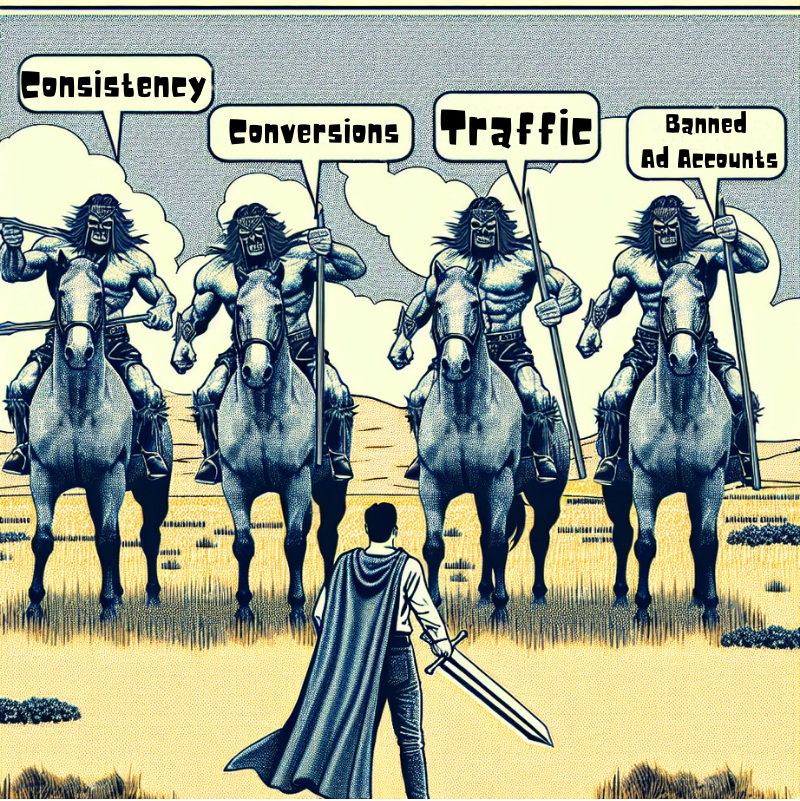Listen up, you beautiful bastards! If you’re here, it’s because you want to know how to create content that’ll make your readers drool like Pavlov’s dogs at a steakhouse. Well, buckle up buttercup, because I’m about to drop some knowledge bombs that’ll turn your boring-ass blog into a goddamn content powerhouse.
1. How-to Content: The Secret Sauce of Engagement
Do you know what people love more than cats doing stupid shit on YouTube? Content that helps them solve their problems. That’s right, my friends. How-to content is the holy grail of engagement. It’s like giving your readers a map of buried treasure, except the treasure is knowledge, and the map is your kickass article.
Example time: Let’s say you’re writing about how to make the perfect grilled cheese sandwich. Don’t just tell them to slap some cheese between two pieces of bread and call it a day. Break that shit down step-by-step, from choosing the right cheese (hint: it’s not that processed crap) to achieving the perfect golden-brown crust. Your readers will thank you, and their taste buds will worship you.
2. Listicles: The Fast Food of Content
Do you know why BuzzFeed blew up faster than a kid with a chemistry set? Listicles, baby! These bad boys are the content equivalent of fast food – quick, easy to consume, and oddly satisfying. They’re perfect for our attention-deficit society that can’t focus on anything longer than a TikTok video.
But here’s the kicker – don’t just half-ass your listicles. Make them meaty (pun intended, vegetarians). Instead of “5 Ways to Improve Your Blog,” go for “69 Mind-Blowing Blog Hacks That’ll Make Your Competition Cry.” Go big or go home, people!
3. Video Content: Show, Don’t Tell (Unless You’re Ugly)
Look, I get it. Not everyone’s blessed with a face for video. But if you can stomach looking at yourself on camera without cringing, video content is where it’s at. It’s like inviting your audience into your living room, except you don’t have to clean up or wear pants.
Pro tip: Don’t just regurgitate your blog posts on video. Give your audience something extra. Show them behind-the-scenes stuff, crack jokes, and maybe even do an interpretive dance about SEO. Whatever floats your boat, as long as it’s entertaining and adds value.
4. Case Studies: Proof That You’re Not Full of Shit
Want to know the secret to making people trust you? Show them that you’ve helped someone else. That’s where case studies come in. They’re like before-and-after photos but for your business. They prove that you’re not just another snake oil salesman in the digital world.
But here’s the catch – don’t make your case studies boring as fuck. Tell a story. Make it dramatic. “How I Helped John Increase His Revenue by 500% (And Save His Marriage in the Process).” Now that’s a case study people will want to read.
5. Infographics: For When Words Are Too Hard
Let’s face it, some people are visual learners. And by “some people,” I mean “most people who are too lazy to read a wall of text.” That’s where infographics come in handy. They’re like the picture books of the adult world – colourful, easy to understand, and perfect for sharing on social media.
But don’t just throw some clip art and numbers together and call it a day. Make your infographics pop. Use eye-catching designs, and surprising statistics, and maybe even throw in a meme or two. Make it so good that people will want to print it out and hang it on their wall (right next to their “Live, Laugh, Love” sign).
6. Checklists: Because People Love Checking Boxes
Do you know what’s better than accomplishing something? Checking it off a list. It’s like a little dopamine hit every time you tick that box. That’s why checklists are content gold. They’re practical, easy to follow, and give your readers a sense of accomplishment.
Example: “The Ultimate Pre-Date Checklist: 50 Things to Do Before You Netflix and Chill.” From personal hygiene to conversation starters, cover all the bases. Your readers will thank you when they’re not sitting in awkward silence, desperately trying to remember if they remembered to put on deodorant.
7. Comparison Content: For the Chronically Indecisive
We live in a world of choices, and sometimes those choices can be overwhelming. That’s where comparison content comes in. It’s like being the wise friend who helps you decide between two equally mediocre options.
But don’t just make a boring pros and cons list. Spice it up! “iPhone vs. Android: Which One Will Make You Look Less Like a Tool at Starbucks?” Be brutally honest, throw in some humour, and maybe even create a scoring system. Make it so entertaining that people will read it even if they’re not in the market for either product.
8. FAQ Content: Because People Are Lazy and Google Is Their God
FAQ pages are like the customer service desk of the internet. They’re there to answer all the stupid questions people are too embarrassed to ask in person. But don’t just throw together a bunch of generic questions. Dig deep. Find out what people are asking (hint: check your search analytics).
And for the love of all that is holy, make your answers entertaining. Instead of “How do I reset my password?” try “Help! I’ve forgotten my password and I’m too ashamed to admit it to my tech-savvy teenager. What do I do?” Empathize with your readers’ pain points and make them laugh in the process.
9. Inspirational Content: For When Life Sucks and You Need a Pick-Me-Up
Sometimes, people need a good kick in the ass to get motivated. That’s where inspirational content comes in. It’s like a pep talk from your overly enthusiastic gym teacher, but it’s useful.
But here’s the thing – don’t just regurgitate the same old “believe in yourself” bullshit. Get real. Share your failures and how you overcame them. “How I Went from Living in My Mom’s Basement to Running a Six-Figure Business (And Still Occasionally Eating Ramen for Dinner).” Inspiration mixed with a healthy dose of reality – that’s the sweet spot.
10. Interactive Content: Because Passive Reading is So Last Century
In today’s world, people don’t just want to consume content – they want to be part of it. That’s where interactive content comes in. Quizzes, polls, surveys – anything that makes your audience feel like they’re participating instead of just passively reading.
Example: “Which Marketing Guru Are You? (Warning: Results May Be Brutally Honest)” Create a quiz that not only entertains but also provides valuable insights. Maybe they’ll discover they’re more of a Gary Vee than a Seth Godin. Either way, they’ll have fun and learn something about themselves in the process.
The Secret Formula to Content That Doesn’t Suck
At the end of the day, creating content that attracts readers isn’t rocket science. It’s about understanding your audience, providing value, and not being boring as fuck. Mix up your content types, inject some personality, and always, ALWAYS, focus on what your readers want.
Remember, in the world of content creation, you’re not just competing with other blogs or websites. You’re competing with cat videos, Netflix, and the endless void of social media. So make your content count. Make it so good that people will choose to read your stuff over watching another episode of “Tiger King.”
Now get out there and create some kick-ass content. And if all else fails, just post a picture of a cute puppy. That shit never gets old.







